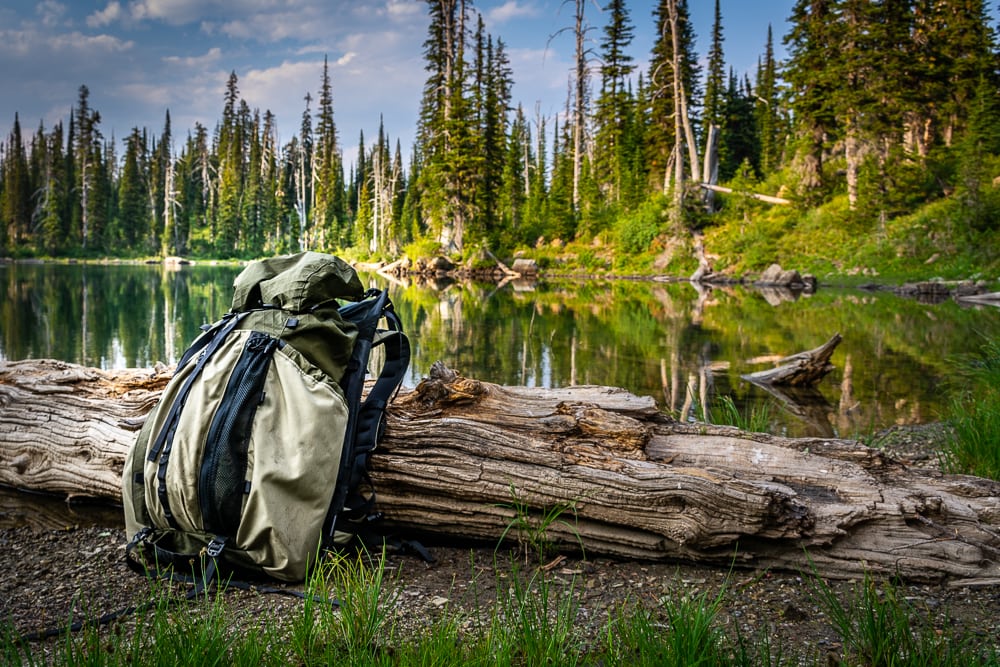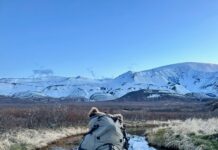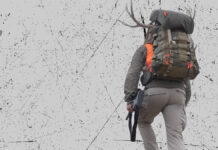Seek Outside Peregrine Review
by Matt Cashell, Rokslide Prostaff
Backpack hunters generally look for excellence in a few categories when choosing a hunting backpack:
- Weight
- Load Hauling Capability
- Comfort
- Versatile Features
- Durability
I’ve found that if a hunter wants everything on the list, they are looking at the top end of the market, and don’t generally get it off the shelf. It is much the same with Grand Junction Colorado’s own Seek Outside.
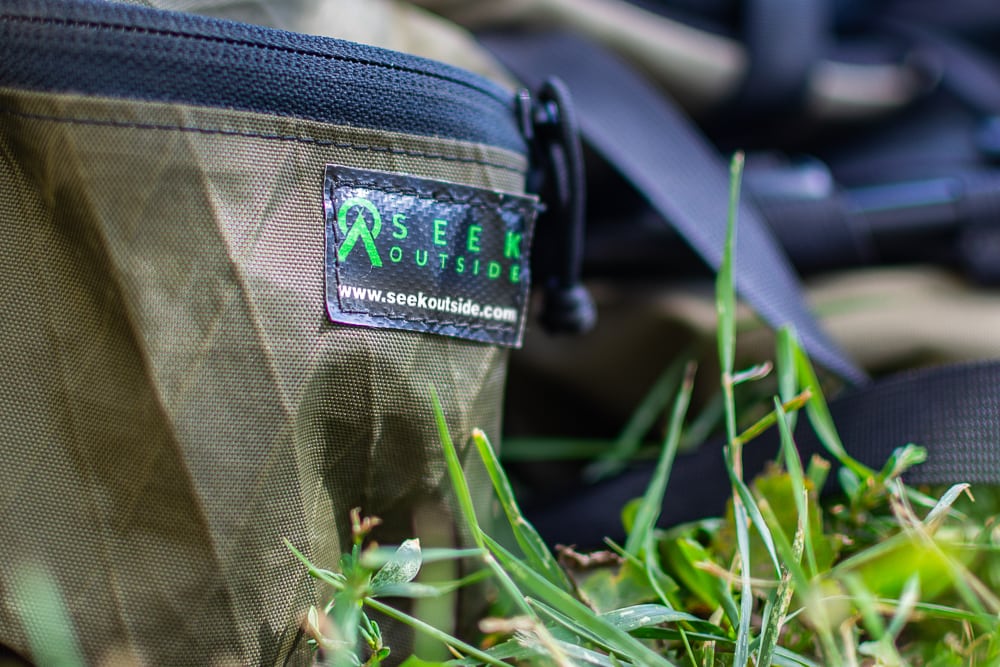
Seek Outside is well known for their ultralight tipi/stove combos for backcountry comfort. Like the tipis, Seek Outside aims to maximize performance while minimizing weight in high-performance hunting backpack applications. I met owner Kevin Timm a few years ago at the Backcountry Hunters and Anglers Rendezvous. Kevin is a truly passionate outdoorsman, and it was obvious in the first few minutes of our first conversation that he brings that passion to Seek Outside’s products.
There are plenty of Seek Outside pack options available, all made right here in the USA. From the ultralight Gila 3500 to the monstrous Brooks 7400, there is something for everybody, from the marathon day hunt to the two-week backcountry expedition.
I visited with Kevin for quite some time before I decided on trying the Peregrine 3500 for predominantly day hunts but with the ability to stretch to a few nights in the woods when needed.
Features:
The heart of the Peregrine is the Revolution Platform frame. The frame is really a compact external frame with webbing and fabric stabilized by tubular aluminum. The frame height is adjustable and provides ample lift to the shoulder harness. The belt can be used attached on the bottom with the top floating or “captured” by a webbing strap and gatekeeper covered by the lumbar pad for a more traditional belt feel. Add to this the addition (or subtraction) of an available lumbar pad that is adjustable in thickness on its own, and you end up with a custom belt fit.
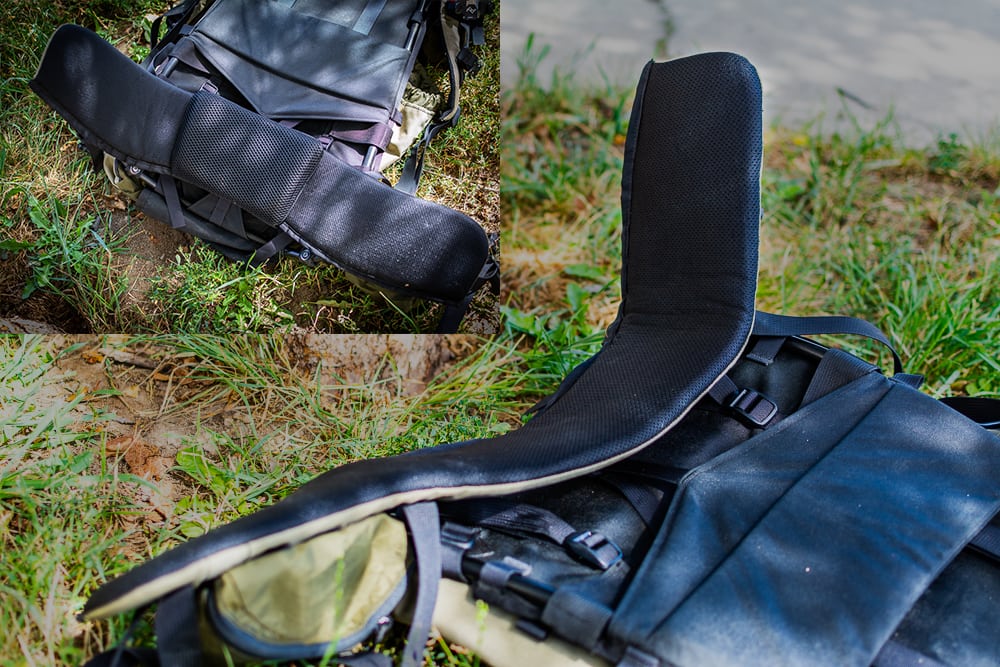
Seek Outside calls the Peregrine a “breakaway” pack, meaning it can be removed from the frame and used as a compression panel for securing heavy loads to the frame. I have always been a fan of this feature, and the Peregrine implementation is a good one. Removing the bag from the frame takes just a minute without the cumbersome disassembly of some other designs. A load panel is secured by gatekeepers to any of several loops on the Revolution panel providing support and adjustable load height, while the three side compression straps provide ample compression for securing awkward loads.
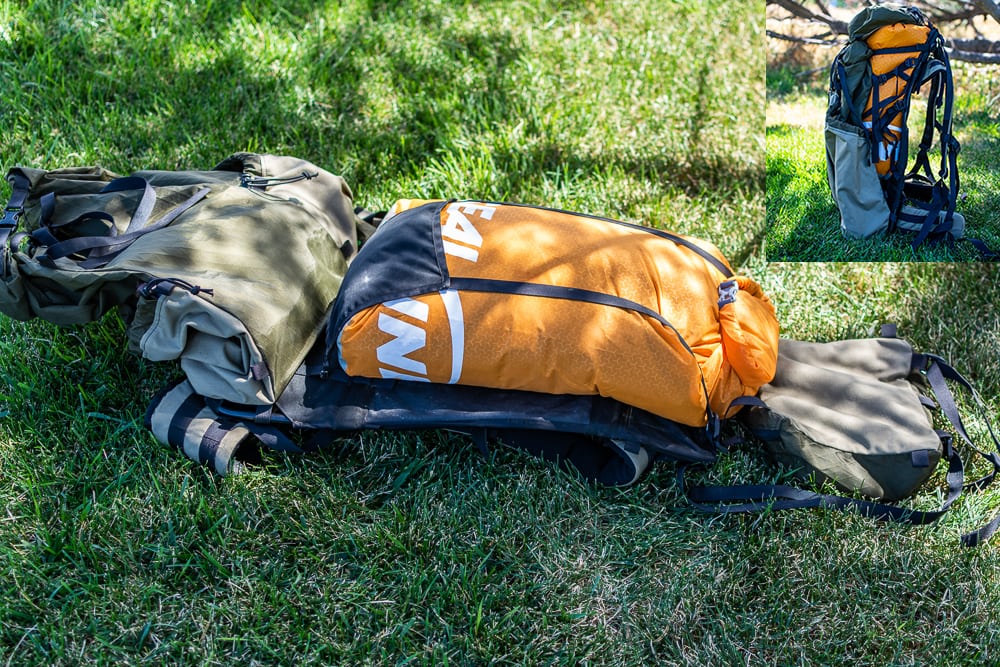
Pocket layout for the Peregrine hits that Goldilocks spot for me. I like to have stuff put in where I can find it, but I don’t need dedicated pockets for my headlamp and toothbrush. The mesh panel storage sleeve on the back provides a convenient spot to put a wet rain shell to drain, while it also includes two overlaying zippered pockets for items like a first aid kit or other possibles. The main compartment is both a roll-top and full side zip. Whether you want to panel-load or top-load, you’re covered, and the zipper is set up in a way where you can access your load either from the side zip, the top, or both at once.
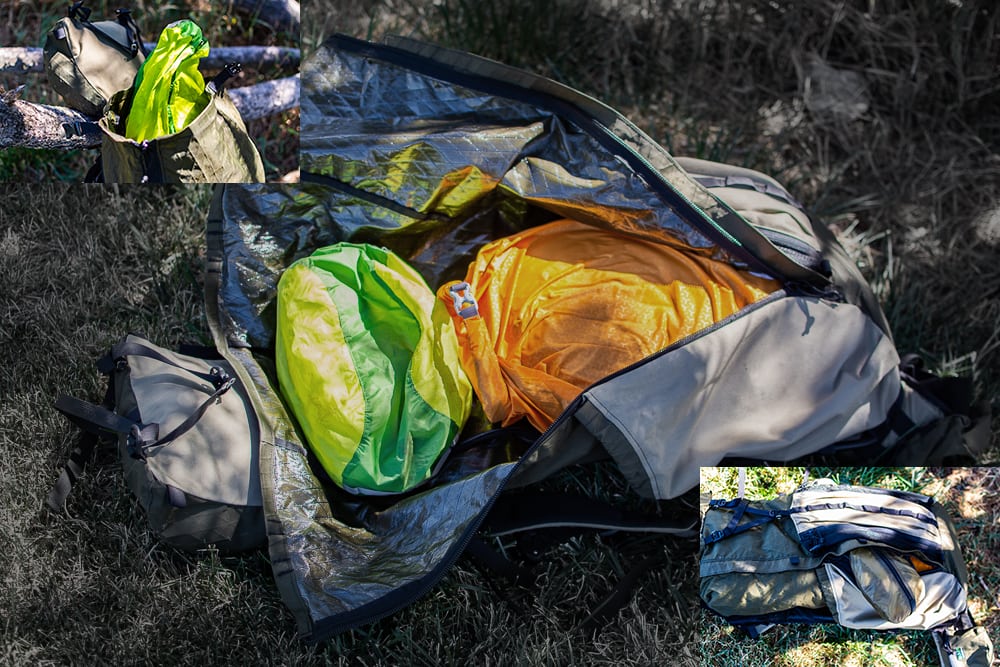
Kevin said he didn’t really find a lid necessary with the Peregrine, but sent me one anyway. I am glad he did. I loved how I could have my lunch handy there, but it also served as an excellent compression lid for making use of the main compartment’s full capacity for those overnighters.
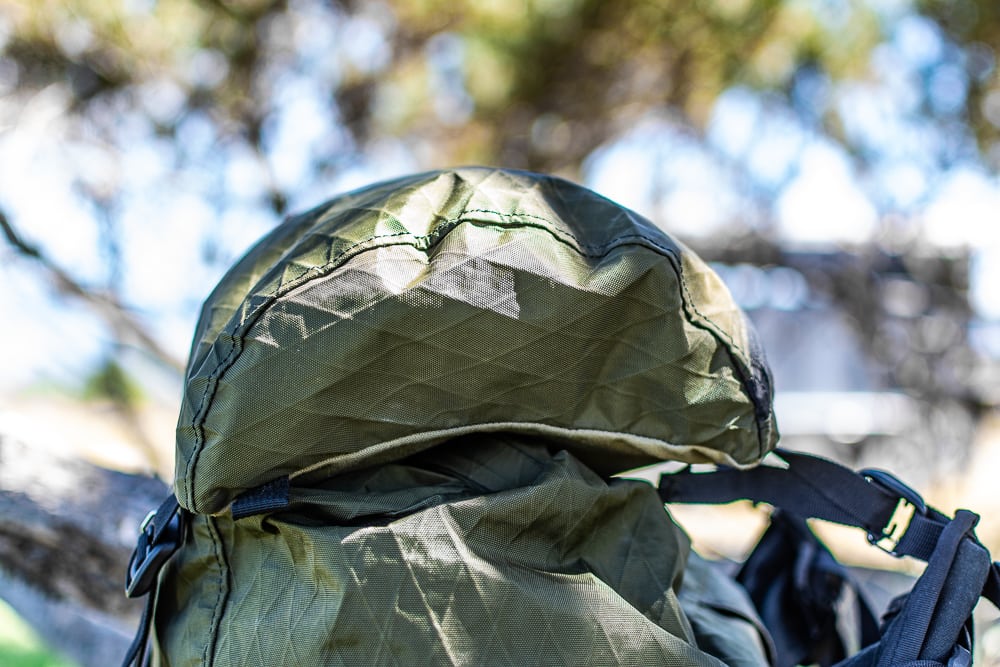
X-Pac waterproof fabrics are used extensively and offer coverless rain protection. Seek Outside recommends seam sealing for additional water resistance. I did get some seep-through at the zippers during a North Idaho bear hunt, but it was only during an extended deluge. I have had great luck with X-Pac’s durability, and it hasn’t shown any signs of wear in the Peregrine.
“Gatekeeper” hardware secures webbing to the connection loops throughout the pack and frame, and they attach, detach, and tighten in an instant. When I first got the pack, I was skeptical about the diminutive gatekeepers from a durability point of view, but after months of real use, I haven’t had a single failure, and their use has become second nature.
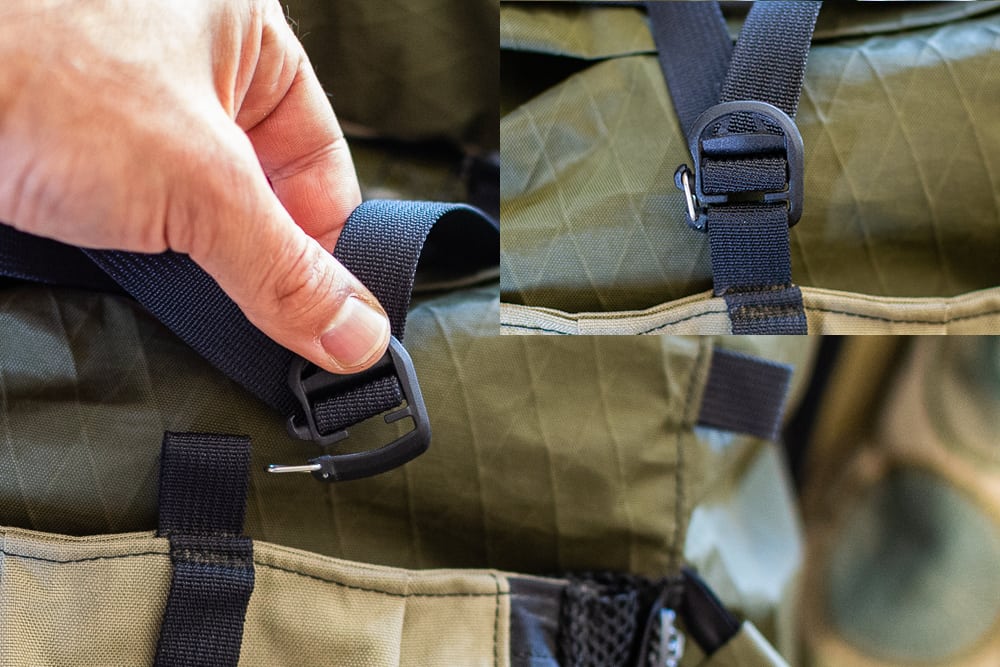
The belt is unusual in that it uses two one inch straps and individual buckles to tighten the load. There is no mechanical advantage forward tightening system as it comes, but the user can easily make one with a few ultralight carabiners added to the belt. I didn’t find it necessary, however, given the excellent belt design didn’t require excessive tightening to be comfortable and haul heavy loads. My pack also came with a buckle that attaches to both straps, for a more traditional single buckle setup. It tried it, but ended up going back to two smaller buckles. While it takes some getting used to, I really ended up liking the versatility of “feel” the two straps give the user. I could tighten the top strap more than the bottom to get the belt resting on my iliac crest, and later adjust the top and bottom tightness independently should a spot get uncomfortable.
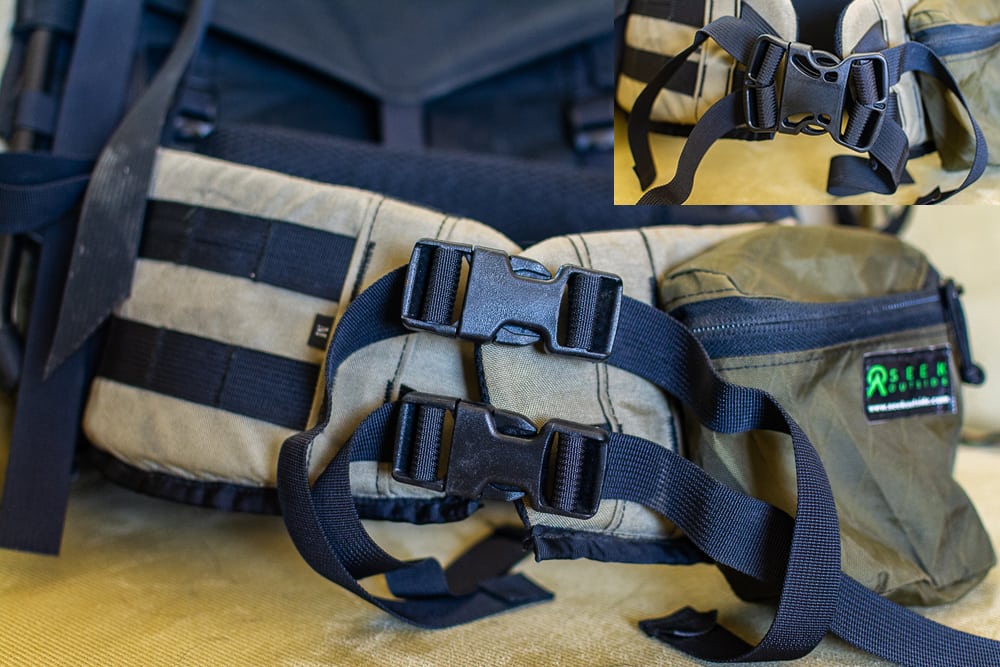
Performance:
Unfortunately, I have been unable to put fresh meat in the load shelf, due to an unpunched Idaho bear tag. However, I was able to use the load shelf feature for pack-based workouts and my sixty-pound sandbag secured. This is where the Seek Outside pack really shines. The excellent belt and sturdy packframe provide serious load hauling ability and comfort. The Peregrine does this while keeping an ultralight empty pack weight of a measured 4 lbs, 1 ounce (not including the lid and side pocket). Other Seek Outside packs have similar load carrying capabilities and are even lighter, but have simpler organization options than the Peregrine.
I particularly like the two oversized, deep, compressible side pockets. These gobbled up my big 85mm spotter and tripod with room to spare. No need to fight with gear to get it in and out. These pockets also offer a good place to put a rifle securely for a long hike. The load shelf panel is removable and I used it on the exterior of the bag as a compression panel for stowing bulky items like sleeping pads, bows, etc.
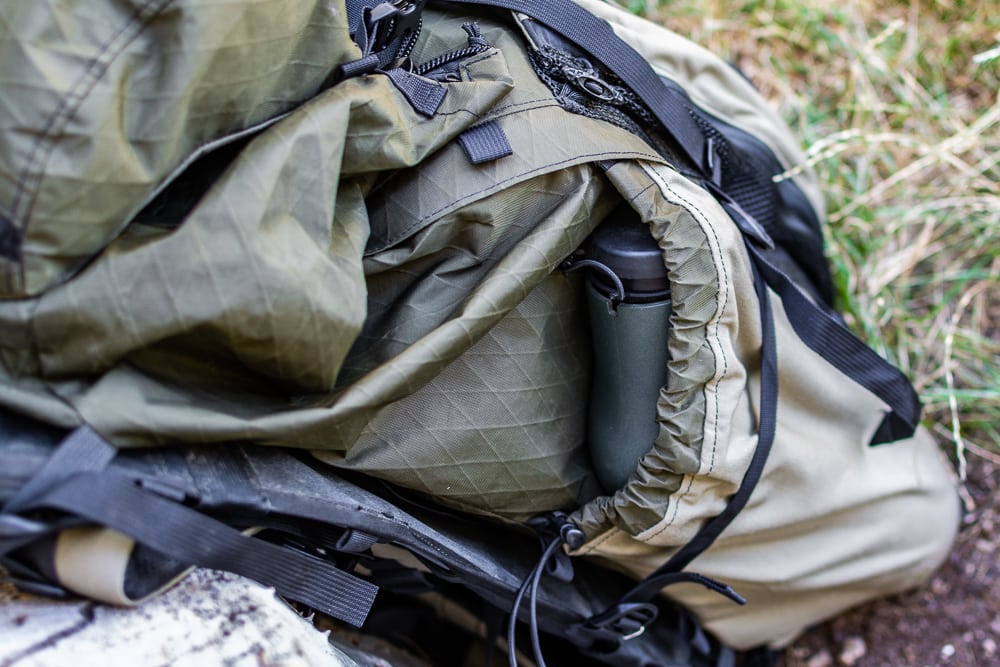
Customer service:
The only minor issue I had with the Revolution frame was some squeaking that developed near the top of the frame stay. A bit of email correspondence to Seek Outside later, and the problem was solved quickly with a shot of PB Blaster Teflon spray (neat stuff on its own). The fit, finish, and sewing work was all impeccable.
The base price for the Peregrine is $489.00, the lid is $39.00, a lumbar pad is $35.00, and a belt pocket runs $25.00. Warranty is lifetime on materials and craftsmanship to the original buyer. The packs are available in solid colors, multicam, and First Lite Cipher, depending on availability. My recommendation is that hunters call and talk to the staff. They are super friendly and ready to help get hunters into the right pack and accessories for them.
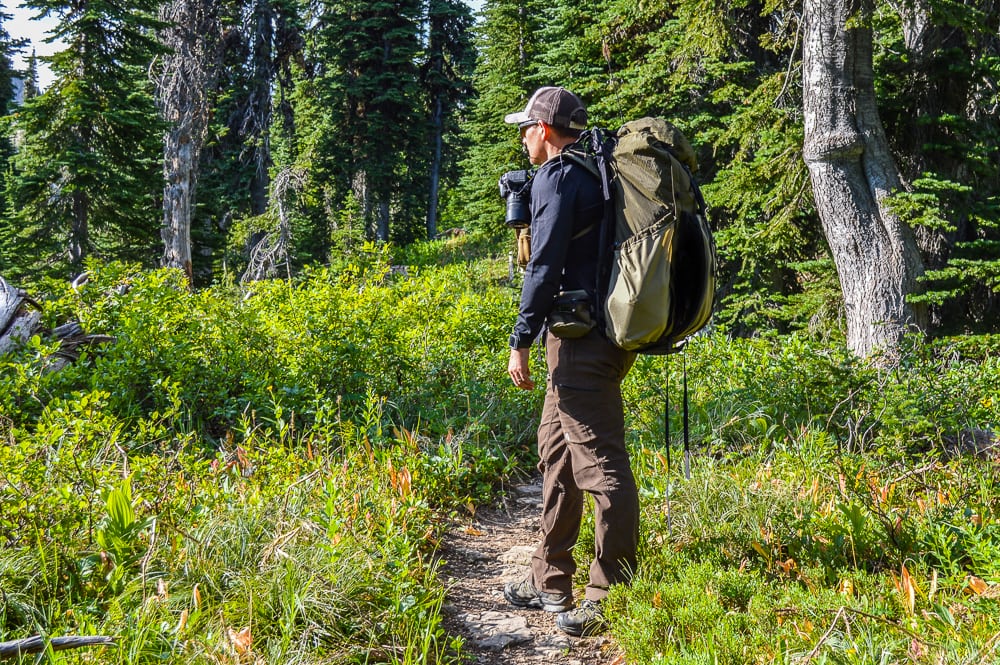
Conclusion:
The Peregrine is an excellent lightweight pack for day hunts to weekend excursions. The quality construction, excellent materials, convenient features, and workhorse hauling capabilities combine to make the Seek Outside Peregrine my new favorite daypack/hauler. While I enjoyed bear hunting, backpacking, and scouting with it, I can’t wait to put some elk blood on it!
You can comment or ask Matt questions here.















